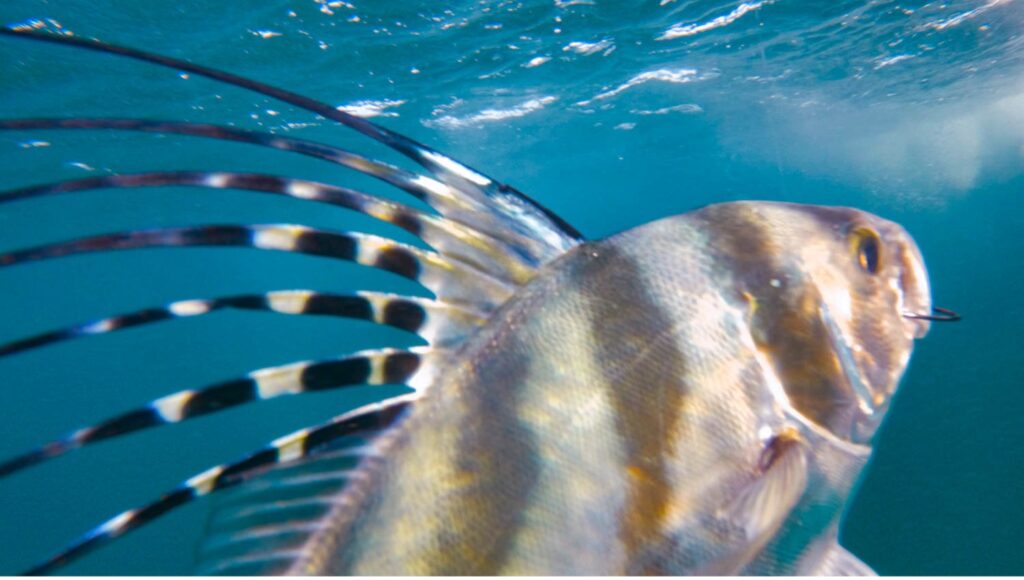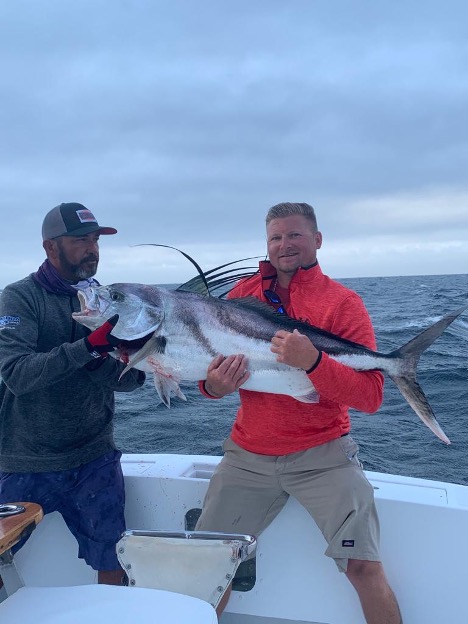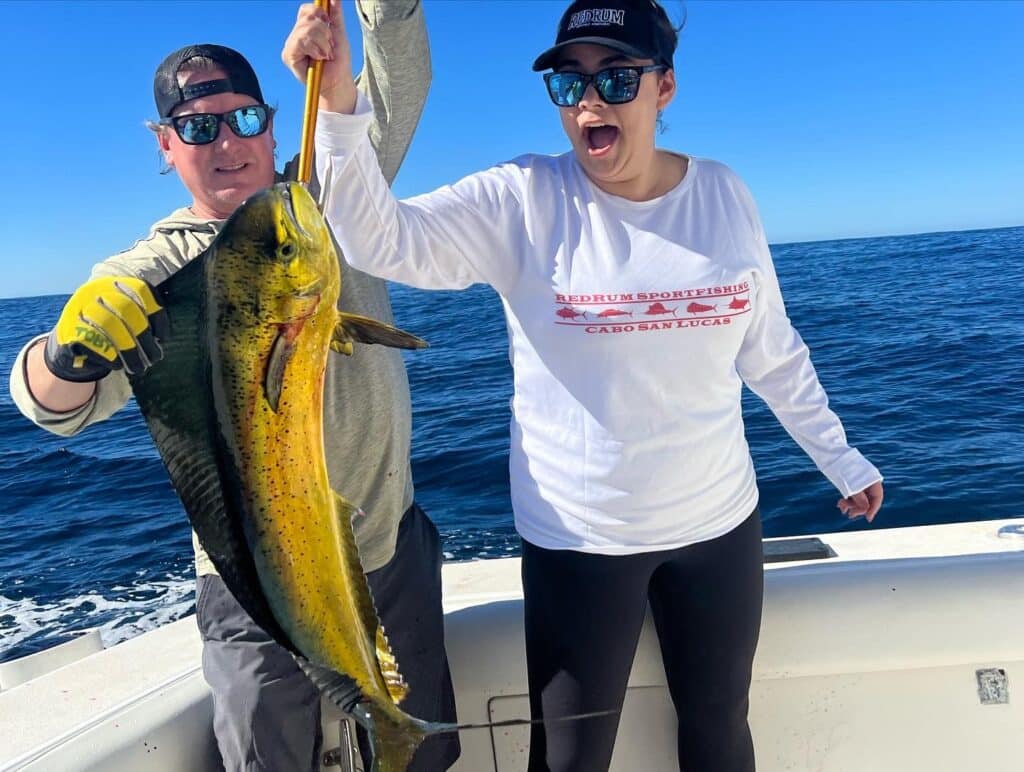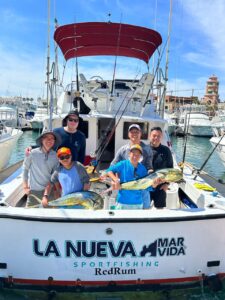Among the prized catches in the angling world, the Roosterfish stands tall, revered for its distinctive appearance, spirited fights, and elusive nature. This charismatic species, known for its ornate dorsal fin resembling a rooster’s comb, captivates anglers with its thrilling presence in the coastal waters of tropical regions. Let’s delve into the intriguing world of the Roosterfish, exploring its characteristics, habits, and the exhilarating experience of targeting this apex predator.
Physical Marvels The Roosterfish, scientifically named Nematistius pectoralis, earns its moniker from the distinct, elongated dorsal fin with multiple long spines that resemble the feathers of a rooster’s comb. These impressive spines can be raised or lowered, creating a spectacular display when the fish is excited or hunting.

Roosterfish boast a robust, streamlined body covered in dark, metallic hues of silver, blue, and green, with vertical stripes that often fade as the fish matures. Their powerful jaws are equipped with sharp teeth, attesting to their predatory nature.
Habitat and Behavior
Found in the coastal waters of the Pacific Ocean, from Baja California to Peru, Roosterfish prefer the shallow waters along sandy or rocky shorelines, near reefs, and in areas with strong currents. They are often solitary hunters but occasionally swim in small schools, patrolling the surf zone in search of prey.
Roosterfish are aggressive predators, known for their lightning-fast strikes and acrobatic fights. They primarily feed on smaller fish, such as sardines, mullet, and crustaceans, using their speed and agility to ambush prey.
The Thrill of Roosterfishing
Anglers consider Roosterfishing a thrilling pursuit due to the fish’s ferocious strikes and powerful runs. Light to medium-heavy spinning or casting tackle is commonly used, employing lures that mimic the fish’s natural prey. Live bait, such as mullet or sardines, is also effective in enticing these predators.
The adrenaline rush of hooking a Roosterfish and experiencing its blistering runs and aerial displays amidst crashing waves is an unforgettable experience for any angler.
Roosterfish in Cabo
Cabo’s diverse coastal landscapes provide an ideal habitat for Roosterfish. Along the Pacific coastlines of Cabo San Lucas and the Sea of Cortez, Roosterfish thrive in the shallow waters near rocky outcrops, sandy beaches, and nearshore reefs. These areas are rich in baitfish, providing ample hunting grounds for these formidable predators.
Roosterfish in Cabo presents anglers with a unique set of challenges and rewards. The Roosterfish’s preference for turbulent surf zones and strong currents demands strategic fishing techniques. Experienced anglers often cast live bait or use lures that mimic the movement of small fish to entice Roosterfish from their hiding spots.
What makes Rooster fishing in Cabo truly exhilarating is the sheer power and agility of these fish. Once hooked, Roosterfish showcase their acrobatic prowess with blistering runs, explosive strikes, and dazzling leaps, providing an adrenaline-fueled battle for anglers seeking a thrilling catch.
Conservation and Catch-and-Release
Given their status as prized sportfish, conservation efforts play a crucial role in ensuring the sustainability of Roosterfish populations. Many anglers, including Redrum Sportfishing, practice catch-and-release, allowing these magnificent creatures to thrive and contribute to the marine ecosystem.
The Next Fish on your Bucket list

Roosterfish, with their striking appearance and thrilling behavior, embody the allure of sportfishing. Whether it’s the challenge of the chase, the adrenaline of the fight, or simply admiring their beauty, encountering a Roosterfish is an experience cherished by anglers seeking adventure along the vibrant coastal waters they call home.
Next time you cast your line in pursuit of this enigmatic predator, remember the exhilaration it brings and the importance of conservation to ensure future generations can also appreciate the magnificence of the Roosterfish.






